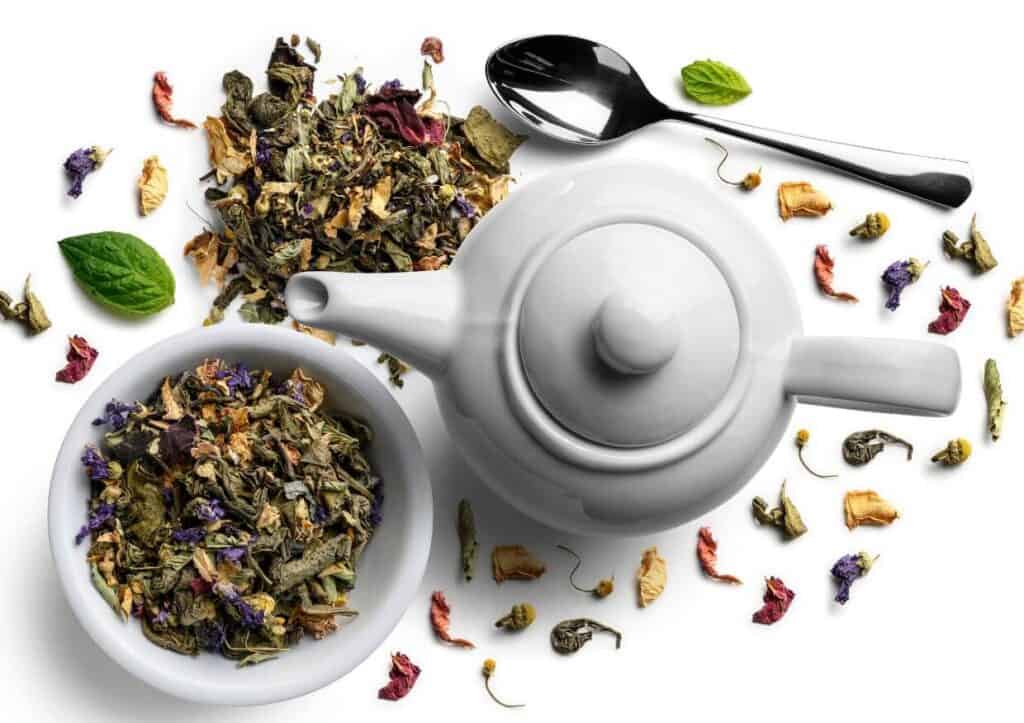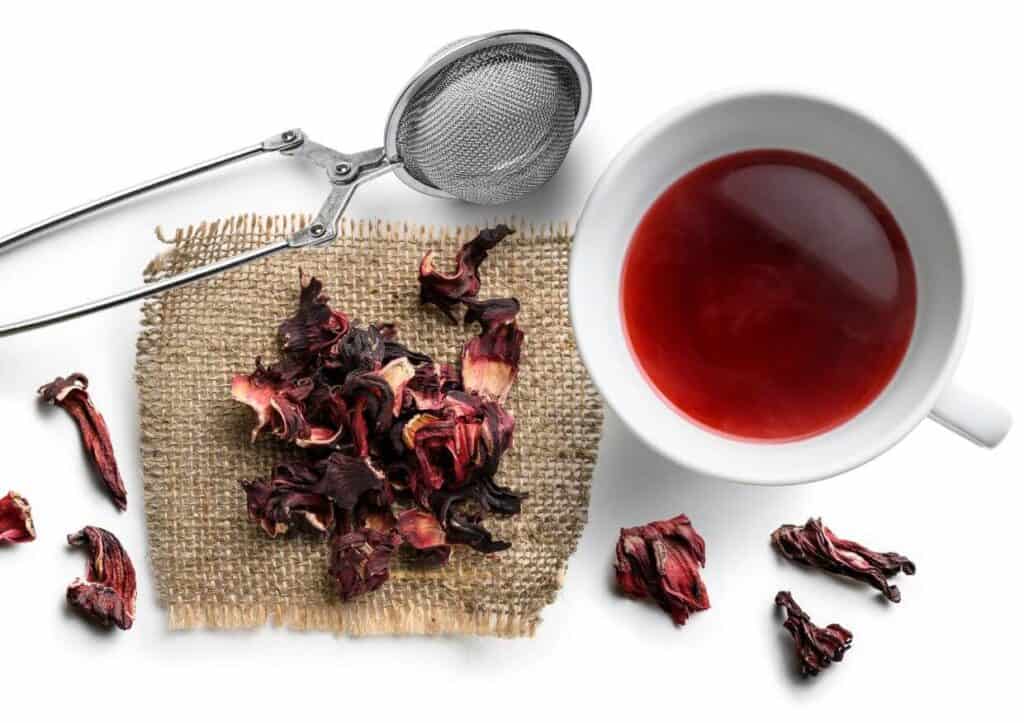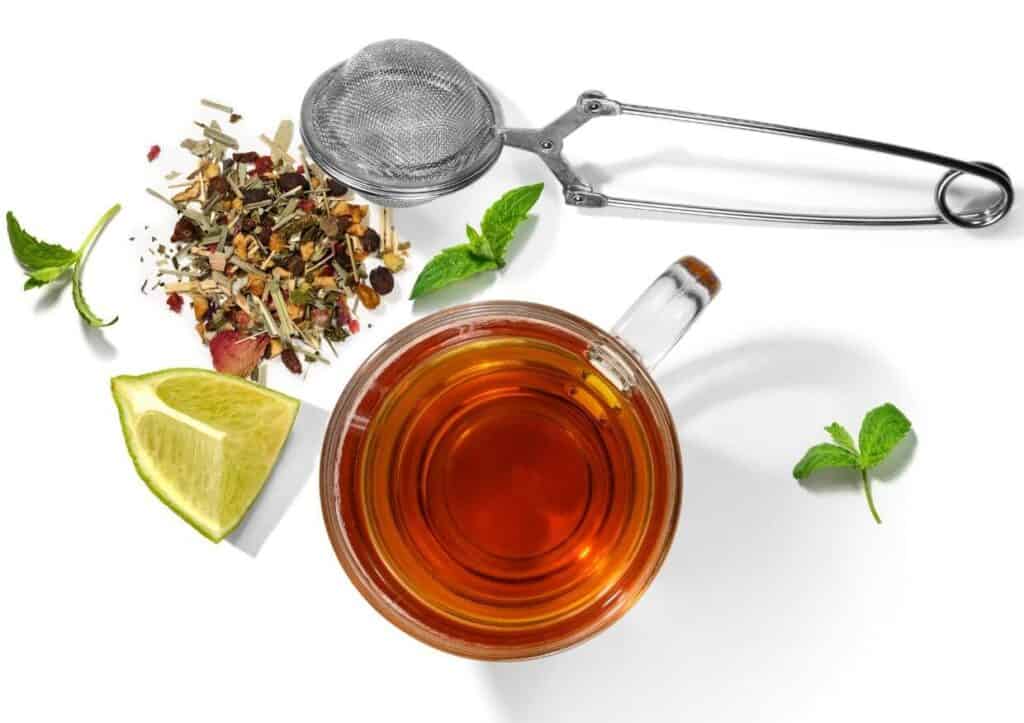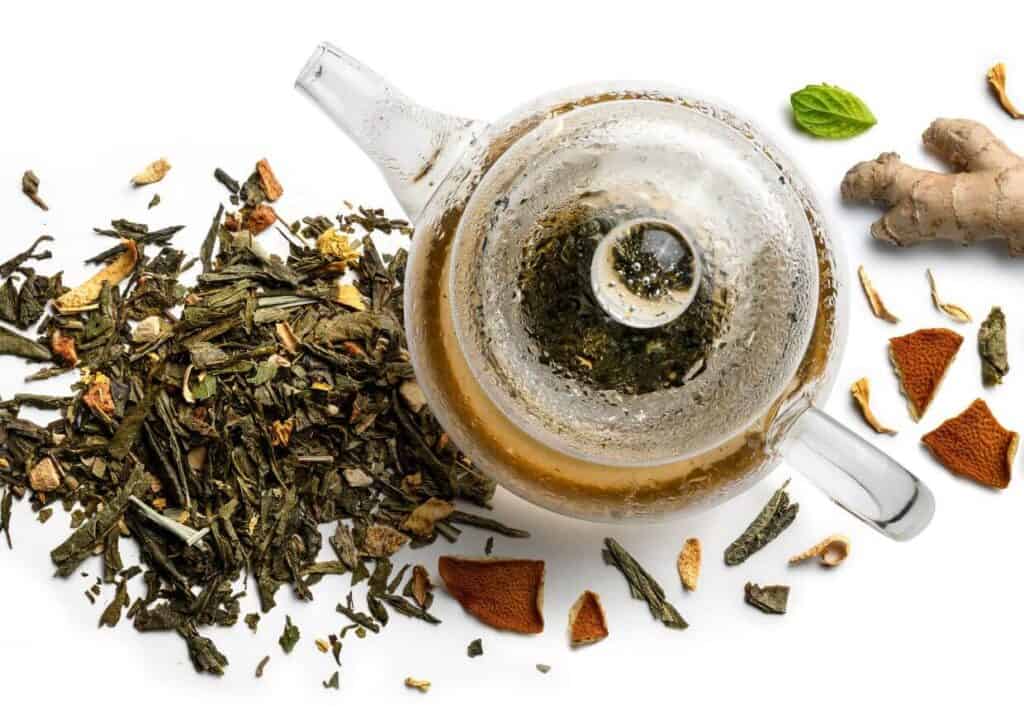Unlock the secrets of loose leaf tea with this beginner’s guide. Learn about the different types, brewing techniques, blends and more.

Many tea enthusiasts worldwide prefer using loose tea because it makes it easier to control the drink’s strength. This style of tea is not enclosed in paper bags or silk sachets, allowing it to retain its complete flavor profile and aroma.
You’ll need a strainer or infuser to brew the loose tea properly since it’s not in a bag. There are traditional teapots with an infuser basket and single-cup infusers for your mug. The brewing time and water temperature vary depending on the tea you use.
Various teas are available such as black, green, white, oolong, herbal and fruit teas. Each type has its unique taste profile and brewing requirements. Premium loose leaf tea offers a higher-quality product that is usually made from whole, unbroken leaves.
Types of tea
There are many types of tea, each with its unique taste and health benefits. Black tea is a robust and full-bodied tea that is heavily oxidized, resulting in a dark color and strong flavor. It is perfect for those who love their tea to be bold and flavorful. It’s popular for making iced tea such as a refreshing iced sweet blackberry tea.
Green tea is another popular variety known for its light, fresh taste. It undergoes minimal oxidation, which helps retain its natural antioxidants and other beneficial compounds that promote good health. Matcha tea is made from the powdered leaves of the green tea bush.
Oolong tea has a unique flavor profile that combines the qualities of both black and green teas. It’s partially oxidized to create a complex flavor profile that ranges from sweet to earthy tones. Oolong teas are also believed to have weight loss properties due to their catechins. Overall, there’s something for every tea lover.
White tea is made from the buds and leaves of tea plants. Like green tea, it is only slightly oxidized to halt the oxidation process before fermentation begins. This means that white tea is much less processed than black tea and retains more of its natural antioxidants, vitamins and minerals.

Herbal tea is any drink made from the leaves, flowers, seeds or roots of plants. It contains no caffeine and is often used as a sleep aid due to its calming properties. Rooibos tea is an herbal tea made from the leaves of a bush native to South Africa. When it’s brewed, it turns red. It has a slightly sweet flavor, is naturally caffeine-free, and is rich in antioxidants.
Benefits of loose leaf tea
Loose leaf tea has become increasingly popular in recent years and for good reason. One of the main benefits is its superior taste. Unlike pre-packaged tea bags, the tea leaves can fully expand and release their flavors, resulting in a richer and more complex taste profile.
Another benefit is its variety. Loose leaf teas come in various blends and flavors, allowing you to explore different types of teas worldwide. Plus, you make a custom tea blend quickly by mixing different varieties.
You also control the amount of leaves used per cup or pot, allowing you to create your perfect cup every time. Switching from pre-packaged tea bags to loose tea leaves can significantly enhance your enjoyment of this timeless beverage.

“I love brewing loose leaf tea, as it seems to hold its freshness and flavor longer than bags of tea. Getting the right strainer makes it so much easier to create tasty tea. Just make sure that you don’t brew it longer — or hotter — than your tea variety needs so it doesn’t have bitter undertones.” — Michelle Price, Honest and Truly
How to brew loose leaf tea
When brewing loose leaf tea, there are several things to remember. The quality of the water used is crucial. It is recommended to use filtered or spring water for an optimal taste.
Be mindful of the water’s temperature. The temperature is vital in determining the resulting flavor and aroma for the tea. For example, black teas require slightly cooled boiling water, while green teas need cooler temperatures, around 175 to 180°F.
The amount of tea leaves you use per serving size must also be considered. A general rule of thumb is one teaspoon per six ounces of water. However, this may vary depending on personal preference and the tea used. Once you’ve added your desired amount of leaves into a brewing vessel (such as a teapot or infuser), pour hot water over them and let them steep for the recommended time frame, typically between two and five minutes.
When serving your tea, you may need a strainer or filter to remove any remaining bits before pouring it into your cup or mug. And don’t forget to take a moment to savor its unique flavor by sipping it slowly.

“When I have guests over, I love putting together a pot of tea. Loose leaf tea is so flavorful, but you’ll need a great strainer. My favorite teapot is the ball strainer because it’s easy to remove. You can also put tea leaves in empty, disposable tea bags for easy disposal — use chopsticks or tongs to remove them from the pot. If kids are around (or even if there aren’t) it can be a fun activity to “read” any remaining tea leaves once the cups are empty and make silly prophecies about the future together.” — Susannah Brinkley Henry, Feast + West
Choosing quality tea
When choosing quality tea, the first step is understanding the different tea types available. Loose leaf tea is often considered higher quality than bagged tea. The best way to determine the quality of tea is to examine its appearance and aroma. High-quality teas should have intact leaves that are not broken or crushed and release a strong fragrance when brewed.
Another factor to consider when selecting quality tea is the origin of the leaves. Different regions produce teas with distinct flavors, so it’s important to research where your preferred type of tea grows best. For example, black teas from India tend to be robust and malty, while green teas from Japan have a more delicate flavor profile with grassy notes.
Purchasing from a reputable tea company will ensure you get high-quality tea. Many specialty shops offer a sampler pack or tasting events so you can try before you buy. It’s also helpful to read online reviews or ask for recommendations from experienced tea drinkers to find trustworthy sources for your new favorite cuppa.
Adding a personal touch
One of the ways to add a personal touch to your tea experience is by investing in a tea infuser that suits your style. Not only does this allow you to control the strength and flavor of your tea, but it also adds an element of fun to your brewing process. Choose an infuser that speaks to you, whether a simple stainless steel mesh or a whimsical animal-shaped gadget.
Another way to personalize your tea experience is by experimenting with different ingredients and flavors for custom drinks. Don’t be afraid to mix and match herbs, spices, fruits and even flowers to create your unique blends. Try adding fresh ginger or lemon for added zest, lavender for relaxation or mint for digestion.

You can also serve your loose leaf tea in a beautiful teapot or cup that reflects your personality. Whether it be a delicate porcelain set with intricate designs or a rustic stoneware mug with earthy tones, choosing vessels that bring joy to you will enhance the overall experience of sipping on delicious tea.
Getting started
Starting your journey into the world of loose tea leaves can be a fun and exciting experience. With so many different varieties and flavors to choose from, there is sure to be something that suits your taste preferences. Whether you are looking for a strong black tea or a delicate green tea, there is no shortage of options.
One of the great things about hot tea is that it can easily become a part of your daily routine. Instead of reaching for a cup of coffee in the morning to enjoy with your favorite breakfast recipe, try a cup of tea instead. It may even help you feel more energized and focused throughout the day than your regular coffee beans.
Entering into the world of loose leaf tea will allow you to explore new tastes and aromas. So why not start today? Grab some premium loose tea leaves and experiment with different brewing techniques to find what works best for you!